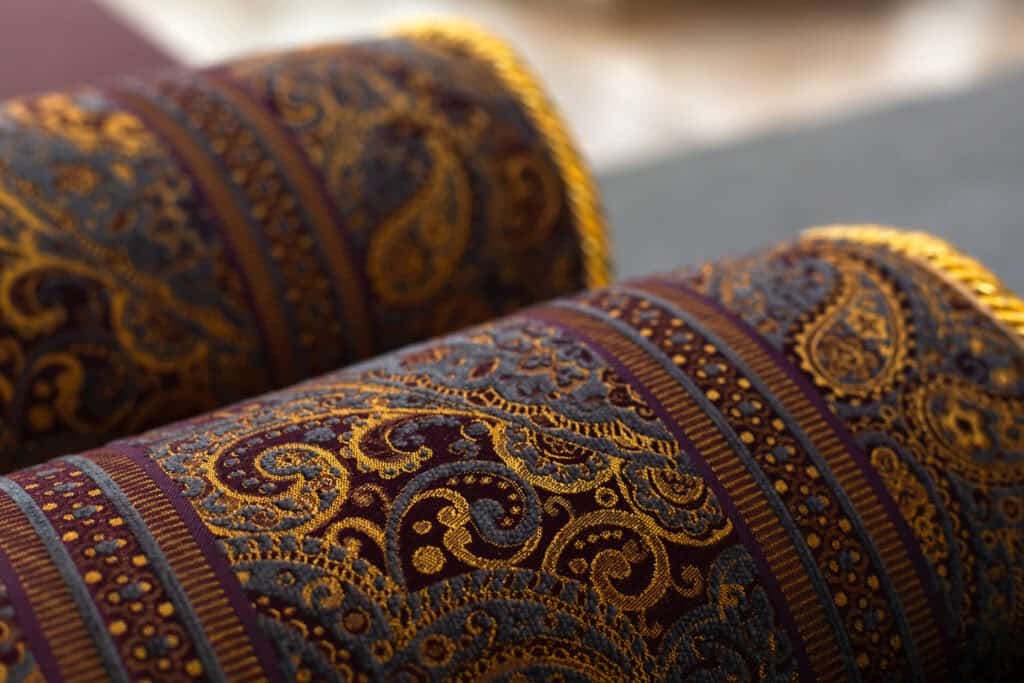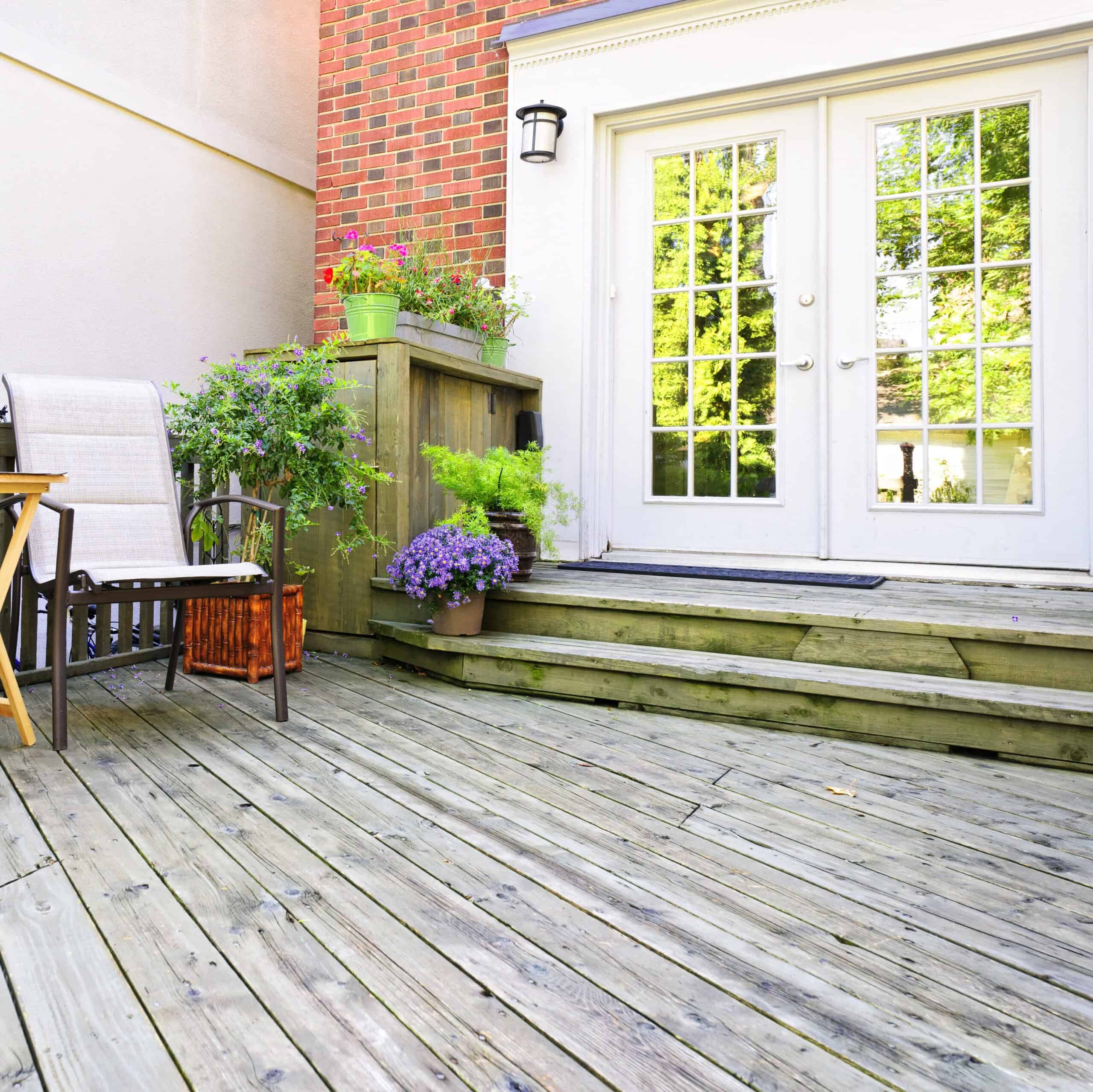During the summer, standing on wood decking can be extremely uncomfortable. Finding an outdoor rug may be the best solution to this problem. However, will outdoor rugs damage your deck, and if so, why?
Outdoor rugs that are made of natural fibers will damage a wood deck because they absorb a high content of water. This release makes it easy for mildew to grow, which causes the wood to rot. Rugs that are made from polypropylene protect decking better because they are resistant to the weather.
So, how do you know what kind of rug to get? We’ll continue to explore that throughout the rest of the article. Hopefully, this will give you a better idea of what you want to do to protect your deck and your feet next time you go out on the deck.
Wooden Decks
To fully understand what types of rugs can damage a wooden deck, we have to understand what wood is made out of. This is the best way to figure out what types of materials will cause the most damage, or do the best at protecting your deck.
Wood is what we call hygroscopic. This has something to do with water and scope when you break down the word. This means that wood basically absorbs the surrounding moisture that is in the air. If there is too much water in the air, the wood will absorb water molecules. If the piece of wood has more water absorbed than what is in the air, it will release water into the environment.
Three main chemical bonds make up wood: cellulose, lignin, and hemicellulose. These all react in specific ways and the bonds help to give wood its versatile nature. We’ll touch briefly on cellulose and lignin to help you understand why wood is a popular choice for decking. (Don’t worry, this isn’t a chemistry lesson.)
Cellulose is made up of polymer chains. This means that it is easy for water to move in and out of the cellular structure of wood. This is the reason that wood is able to absorb water; these polymer chains interact with the water molecules. This is why wood is a popular choice for decking. It absorbs water easily and will then release moisture based on how dry the environment around the wood is.
Lignin is what gives wood its structure. Due to its chemical structure, it is nonpolar. This means that the molecules in lignin do not interact with water well. This property is what allows water to be drawn up from the roots to the top of the tree when it is standing. For decking, this means that the lignin helps to provide a backbone for the wood. This is what contributes to the strength and durability of the wood.
Natural Fiber Rugs

So, what does this have to do with rugs? It may seem like talking about cellulose and lignin are unimportant when it comes to choosing what rug you pick out. However, understanding these two large components that makeup wood makes a big impact. A natural fiber rug is made out of organic materials. This means that these molecules are going to have a natural interaction with the molecules in wood.
Wool Rugs
Wool rugs are among the worst outdoor rugs you could choose for your deck. You might be confused because wool is great at absorbing water. That is true, but that is the exact reason it can damage your wood deck. Wool is also hygroscopic. In fact, wool can absorb a high content of water before the water reaches things that are covered by wool.
If you remember from earlier, we discussed how wood is also hygroscopic. One of the specific characteristics of hygroscopic objects is that water is slowly released into the air. So, if we have a wool rug that is wet and a wood deck that is wet, that means the moisture is going to stay in the wood for a much longer period of time.
This length of time is going to make it easier for mildew and wood rot to start. If you live in an especially humid area, you don’t want to have an outdoor wool rug. Your deck is going to get damaged much more quickly than it would if you had a synthetic outdoor rug.
Rubber or Latex
Other materials that can damage wood decks are outdoor rugs that have rubber or latex on the bottom. This is simply because they are not manufactured to withstand the elements. They break down much more quickly, which means that if you have a wool rug with a rubber or latex pad underneath it, your wood deck is in danger. The rubber or latex may protect the wood from the wool for a time, but eventually, you will encounter the same problems as before.
Additionally, rubber and latex are bad backings for rugs because they trap heat and moisture in the wood. Because rubber and latex are manufactured to repel water, any water that is trying to be removed from the decking is going to stay trapped. This constant humidity or heat can cause the slats of your deck to warp.
Polypropylene Rugs
One of the most popular choices for an outdoor rug is one that is made out of polypropylene. There are other synthetic rugs that function just as well as polypropylene rugs. One unique property of polypropylene rugs is that they are designed to withstand the weather. They can remain effective even after a large rainstorm.
In addition to being able to withstand harsh weather conditions, polypropylene rugs are built to preserve the colors of the pattern. You can enjoy the same bright bottlecap blue the day you bought it and see that color a few years later. They are also stain-resistant which is especially nice if you have small children.
At the end of the day, the rug you choose is up to you. But considering the factors and chemical makeup of wood can make a big difference. Understanding how things work is the best way to get the result you want.

